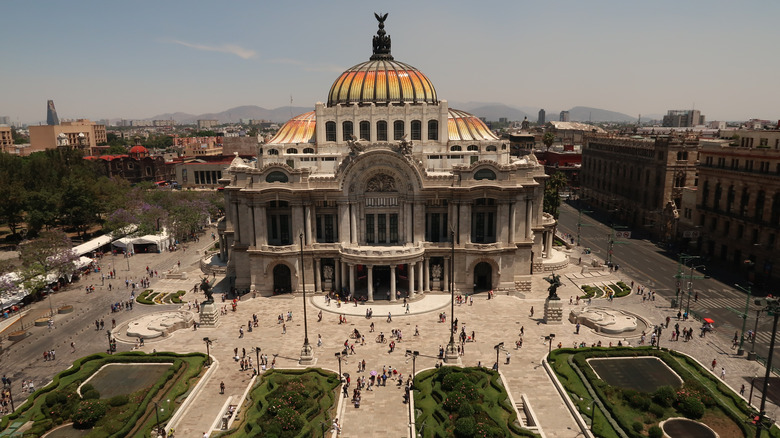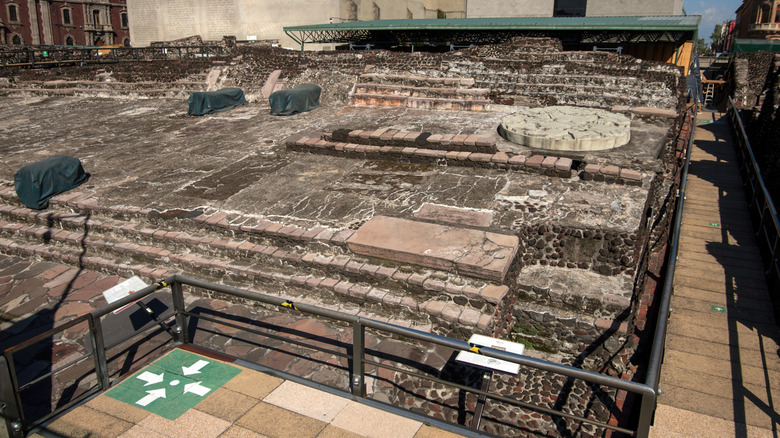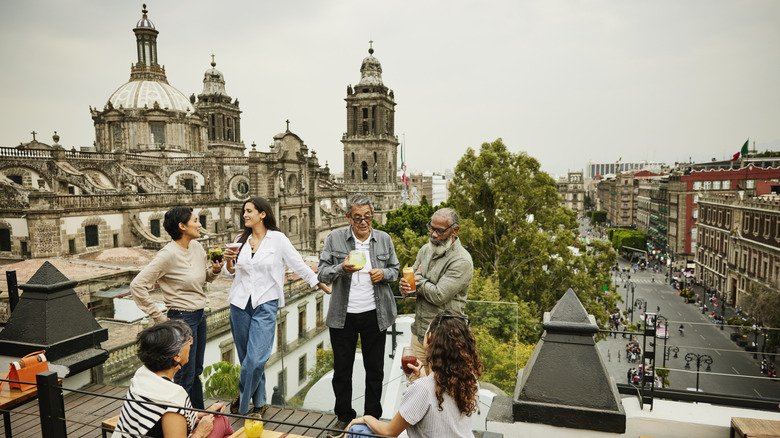One Of Mexico City's Oldest Neighborhoods Buzzes With Rooftop Parties, Aztec Ruins, And Seafood Stalls
One of the oldest inhabited urban settlements in the Western Hemisphere, Mexico City pulses with life, a vibrant blend of rich history and modern allure. From the cobblestone streets of Coyoacán where Frida Kahlo once painted to the city's leafy, art-deco district, Condesa, and the baroque grandeur of the bustling Zócalo, time stands still as ancient ruins are juxtaposed against cutting-edge skyscrapers, while mariachi melodies fill the air, making this city a captivating metropolis that never sleeps.
Of all the city's districts, the Centro Histórico is a captivating blend of the ancient and the modern, where Aztec ruins stand alongside colonial architecture, and contemporary rooftop bars pulse with music against a backdrop of centuries-old cathedrals. The historic heart of the city is more than a collection of iconic landmarks, it's a dynamic neighborhood where tradition and modernity coexist, creating a vibrant atmosphere that's relatively safe, impossible to resist, and proof that a city break is one of the best ways to vacation in Mexico.
Centro Histórico, where Aztec ruins meet pulsing street life
The soul of the city, this district is called the Historical Center for a reason. At the heart of the neighborhood is the Templo Mayor, an archaeological site that was once the center of the Aztec capital, Tenochtitlán. Discovered by accident in 1978, this impressive site reveals the remnants of a massive pyramid, ceremonial platforms, and carved stone deities, offering a glimpse into the grandeur of pre-Hispanic Mexico.
Adjacent to the ruins is the Templo Mayor Museum, which houses thousands of artifacts unearthed from the site, including the infamous Coyolxauhqui Stone, a colossal stone disk depicting the dismembered body of the Mexica moon goddess. Visitors can wander through the museum's meticulously curated exhibits to understand the spiritual and cultural significance of these ancient relics. For those eager to delve further into the city's rich history, a stroll through Palacio de Bellas Artes is essential. This grandiose art nouveau and art deco structure is a feast for the eyes, adorned with murals by Diego Rivera and Rufino Tamayo.
Getting to Centro Histórico is relatively easy, thanks to its central location and robust transportation network. Benito Juárez International Airport (MEX) is the primary airport serving Mexico City, located approximately 6.5 miles east of Centro Histórico. Taxis and Ubers in the city are relatively affordable, with a journey time of 20 minutes from the airport to the historic district. You can also hop on the city's vast Metro system, disembarking at Pino Suárez or Isabel la Católica stations, both of which are a 10-minute walk to the Zócalo.
Rooftop views of the ancient capital
When the sun dips below the skyline, Centro Histórico comes alive with rooftop bars offering stunning views of the city's illuminated monuments. El Mayor, a sophisticated terrace perched above a bookstore, boasts one of the best views of the Templo Mayor ruins. Here, guests can sip on mezcal cocktails while gazing at the glowing Aztec ruins below, an ethereal sight that seamlessly blends past and present. For a more upscale experience, head to Terraza Catedral, a chic rooftop bar located atop a historic hostel near the Metropolitan Cathedral. The ambience is relaxed but trendy, attracting a mix of locals and tourists who come to enjoy craft cocktails, DJs spinning eclectic sets, and panoramic views of the Zócalo, the city's main square.
Centro Histórico is a paradise for food lovers, especially those seeking authentic Mexican seafood. El Caguamo, a beloved seafood stall that has been serving locals for decades, is famous for its fresh ceviche and shrimp cocktails. The stall is always bustling, with patrons spilling onto the sidewalk as they savor cups of tangy seafood soaked in lime juice and garnished with cilantro and avocado. Another unmissable spot is Contramar, a short walk from the Centro, a famed fish restaurant renowned for its pescado a la talla — a grilled red snapper slathered in contrasting red and green sauces. The dish is a culinary masterpiece, perfectly embodying the vibrant, spicy flavors that define Mexican cuisine.
Centro Histórico is a living museum where each street, plaza, and rooftop tells a different story. Whether you're wandering through ancient Aztec ruins, savoring fresh ceviche from a street stall, or dancing under the stars on a rooftop terrace, the area's vibrant energy is palpable. Here you can embrace the fusion of history and modernity, indulge in local flavors, and soak in the mesmerizing skyline of one of Mexico City's most fascinating districts.


